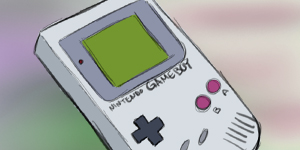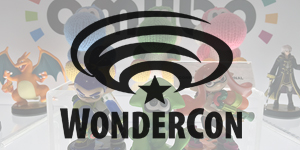Extra: The Casual Era Is Dead
For the better part of the past decade, Nintendo has been preaching the gospels of casual gaming. Here was an untapped market of people who enjoy playing games, yet don’t have the knowhow or interest to dive into the deeper gaming experiences previously offered. Instead of getting lost in the world of a Zelda game, they prefer to play the point-and-shoot Link’s Crossbow Training. Instead of a deep sports sim, they’d rather pull out Wii Sports for a few quick rounds with family members. It was a smart strategy for Nintendo, leading to huge success with both Wii and DS, plus helping to create entirely new gaming genres such as brain training and digital fitness. Yet just as quickly as the casual market exploded, it’s now gone. What felt like a complete tonal shift for Nintendo is now just a small, decade-long detour in the company’s 125-year history. You can trace the decline since the heyday of the Wii and DS, but yesterday’s announcement of the New Nintendo 3DS was the final nail in the coffin of the casual era.
To Nintendo’s credit, they saw this decline coming. As company CEO Satoru Iwata succinctly told investors back in 2009, “The fact is, people can easily quit playing games.” The company knew from the get-go that they would need to ease these casual gamers into more advanced gaming experiences or risk losing them. Wii Sports could lead to New Super Mario Bros. Wii, which could then lead to The Legend of Zelda: Skyward Sword. In many ways, the Wii and DS were simply trojan horses to turn non-gamers into active ones. Unfortunately, it didn’t work that way. If you look at the lifetime sales numbers of just those three previously mentioned games, the decline is quite evident: ultra causal-friendly Wii Sports sold an incredible 82 million copies (granted, it had a hardware bundle in its favor), New Super Mario Bros. Wii moved a respectable 29 million copies, and as of April 2012, motion-controlled Skyward Sword only sold 3.52 million copies – its sales have been so low since then that Nintendo stopped putting out a total.

Nintendo’s current generation of consoles have experienced a more drastic struggle with casuals. The Wii U was supposed to be a bridge between casual and core gaming, offering both intuitive touch/motion controls and traditional controller buttons in one GamePad. The problem is nobody but core gamers are buying the system. Just look at how Wii Fit U performed. The original Wii Fit moved 687,000 copies in its first month of US sales and went on to sell nearly 23 million copies worldwide. Wii Fit U? According to leaked NPD numbers, it barely sold 48,000 units in the US since it came out in January. 3DS has experienced a similar issue with its casual-friendly games. Launch title nintendogs + cats sold a respectable 3.5 million copies worldwide, yet the original DS versions sold 34 million. Even DS wunderkind Brain Age flopped when making the transition to the new system: the 3DS version, Brain Age: Concentration Training, has only sold a total of 26,000 units in the US as of last December. Compare that to the original game’s 19 million sold worldwide and the sequel’s 15 million.
Simply put, the casuals are gone. They’ve moved on to smartphones and tablets, where games are free or incredibly cheap. Whether or not Nintendo could have somehow prevented this is hard to say, but the company is now starting to accept that it’s the case. In an interview with EDGE magazine published earlier this week, Shigeru Miyamoto admitted that making games for the casual crowd is no longer his team’s goal. He described the demographic as passive, arguing, “Their attitude is, ‘okay, I am the customer. You are supposed to entertain me’… They do not know how interesting it is if you move one step further and try to challenge yourself [with more advanced games].” In other words, Miyamoto has admitted defeat: the idea that casual gamers can evolve into core gamers through ‘gateaway games’ such as Wii Fit or Brain Age didn’t work. The upside, according to Miyamoto, is that “we do not have to worry about making games something that are relevant to general people’s daily lives.” Games can just be games again.

The strongest example of Nintendo’s newfound focus on the core gamer is none other than yesterday’s announcement of the New Nintendo 3DS. This upgraded version of the handheld is comprised almost entirely of features that the Nintendo of five years ago would never have dreamed of. The most prominent example is the increase in control options. The 3DS already had a lot of inputs, but now there are two additional shoulder buttons (ZR and ZL), as well as a second analog control that looks and functions nothing like the primary analog stick. For a company that built the Wii Remote around the idea that controllers are getting too complicated, they certainly made a complicated handheld interface. It’s the type of interface Miyamoto described back in 2005 as something that Nintendo wants to avoid, “You look at these controllers and think, ‘Oh my God, it looks so difficult.'” That’s not to say us gamers won’t get it, but appealing to more casual gamers or non-gamers is clearly not a priority when a system has 15 different inputs (yes, we counted). Similarly, the Nintendo of yesteryear would never highlight a pure spec increase. When the Nintendo DSi launched with increased RAM and a faster CPU, Nintendo only marketed new features such as the camera, multimedia support, and DSiWare. With the New 3DS, however, one of four key features shown in its reveal video was the handheld’s spec boost.
For many Nintendo fans, this renewed focus on the core gamer is a return to what the company does best. Even before it was official, you could already see the shift occurring with the core-oriented lineups for both Wii U and 3DS. The downside, of course, is that Nintendo’s financials are nowhere near the heights of last generation. We’re in an era where Nintendo may be catering to us, but they’re also slipping back into the sales decline of the GameCube days. Conveniently, this is where their upcoming Quality of Life platform may come into play. Instead of trying to cater to both gamers and non-gamers alike, Nintendo can make their game consoles all about the games and experiment with casual-friendly fare on whatever QOL turns out to be. The causal era may be dead, but the next one is about to begin.



